This project is available for Earn-In Option / JV / Sale.
A brownfield exploration and development opportunity for high-grade silver-cobalt-nickel with excellent local infrastructure, including year-round road access, power, railways and mills. Langis is located within the Timiskaming First Nation traditional territory.
Brixton Metals is exploring for silver, cobalt and nickel within the Cobalt Camp.
History
The Langis Mine produced over 10.4 million ounces of silver and 358,340 pounds of cobalt, with a recovered grade of approximately 25 oz/t Ag. The Langis Mine operated from 1908 to 1989 and was subsequently closed in 1990 due to a significant drop in silver prices, to $5 per ounce (oz) of silver.
The Langis Mine boasted impressive silver-cobalt recoveries, ranging from 88% to 98%, with assay values of up to 18% silver and 16% cobalt. The Langis Mine features over 10 kilometers of underground workings, extending only 150 meters below the surface. The historic workings are flooded at this time. The Langis Project does not have a current mineral resource estimate or mineral reserve.
Regional Silver Camp History
Outcropping silver veins were first discovered in Cobalt, Ontario in 1903 during the construction of the Timiskaming and Northern Ontario Railway from North Bay. Fred LaRose, a blacksmith employed in the construction of the railway, is credited with the first discovery but the first application for claims, filed on August 13, 1903, was made by J.H. McKinley and E.F. Darragh, subcontractors who supplied ties for the railroad. Records indicate that the Cobalt Camp has produced approximately 600 Million ounces of silver and 28 Million pounds of cobalt since discovery.
Drilling
Brixton acquired the Langis Project in 2016 and has since collared 288 holes, drilling over 40,000 meters. The drilling has been focused around the historic underground workings area to better understand the controls on the silver and cobalt mineralization, in addition to expanding their known extents beyond where they were mined.
High-grade silver structures have been a primary target and over 220 intervals of >100 g/t Ag have been intersected during Brixton’s four drill campaigns. Highlights include 7.8m of 2,787 g/t Ag and 0.27% Co in hole LM-18-016 (Shaft #6 target) and 14.2m of 1,140 g/t Ag in hole LM-20-133 (Shaft #3 target).
Cobalt and silver appear to have been formed during separate mineralizing events, although silver and cobalt veins are found sharing several of the same structures on the property. Since 2016, Brixton has intersected 137 intervals of >0.1% cobalt. In 2022, 30.5 meters of 0.35% Co were intersected at the Shaft #4 target in drill hole LM-22-254, including 3.50m of 1.89% Co.
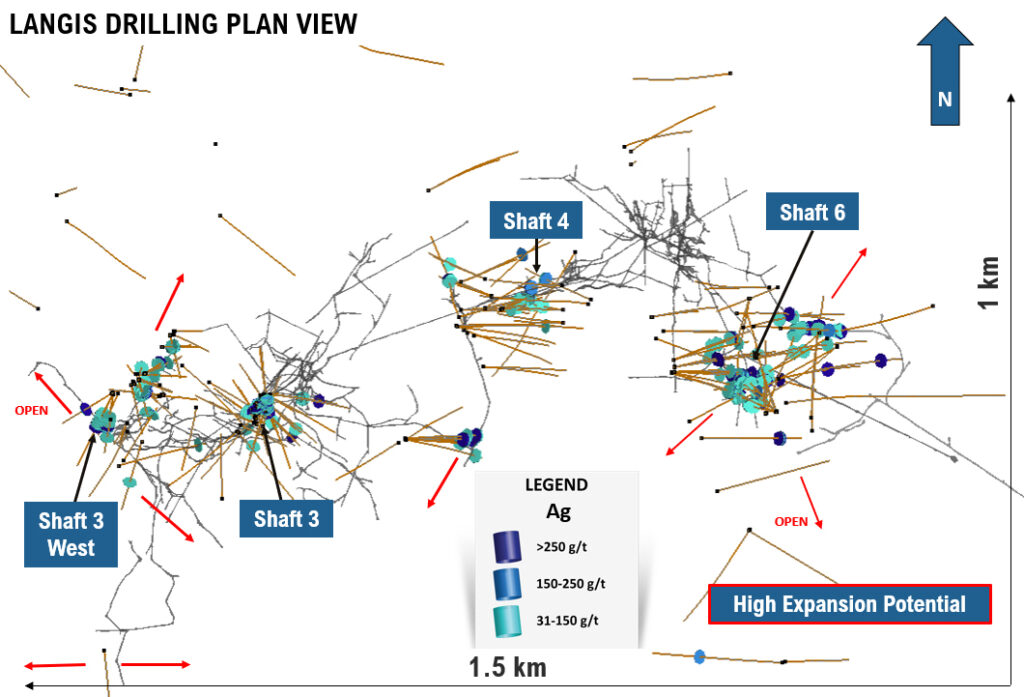
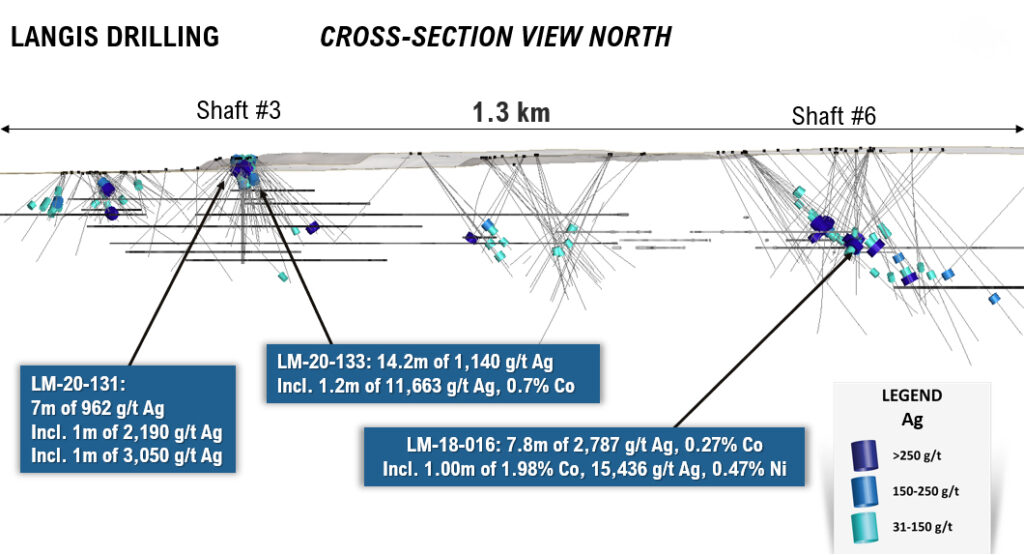
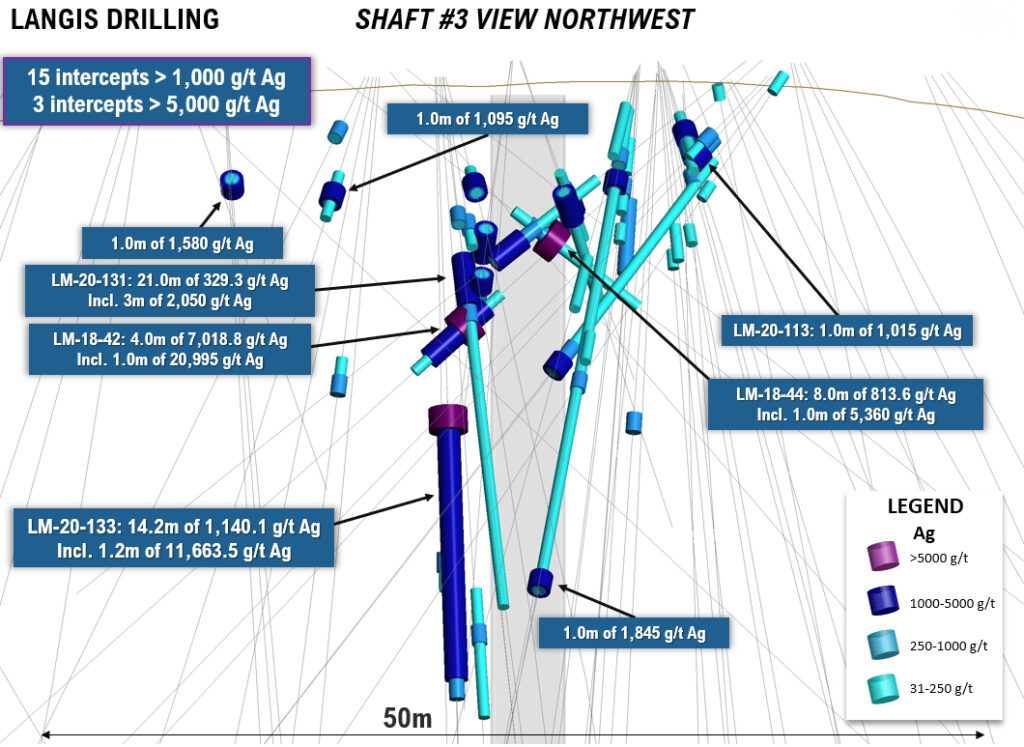
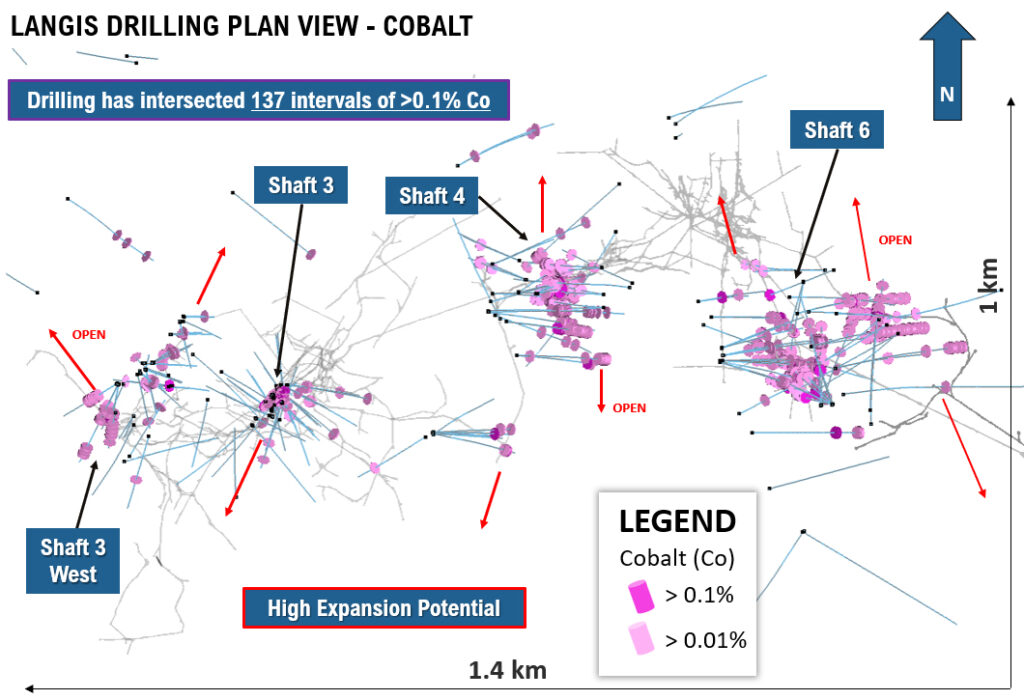
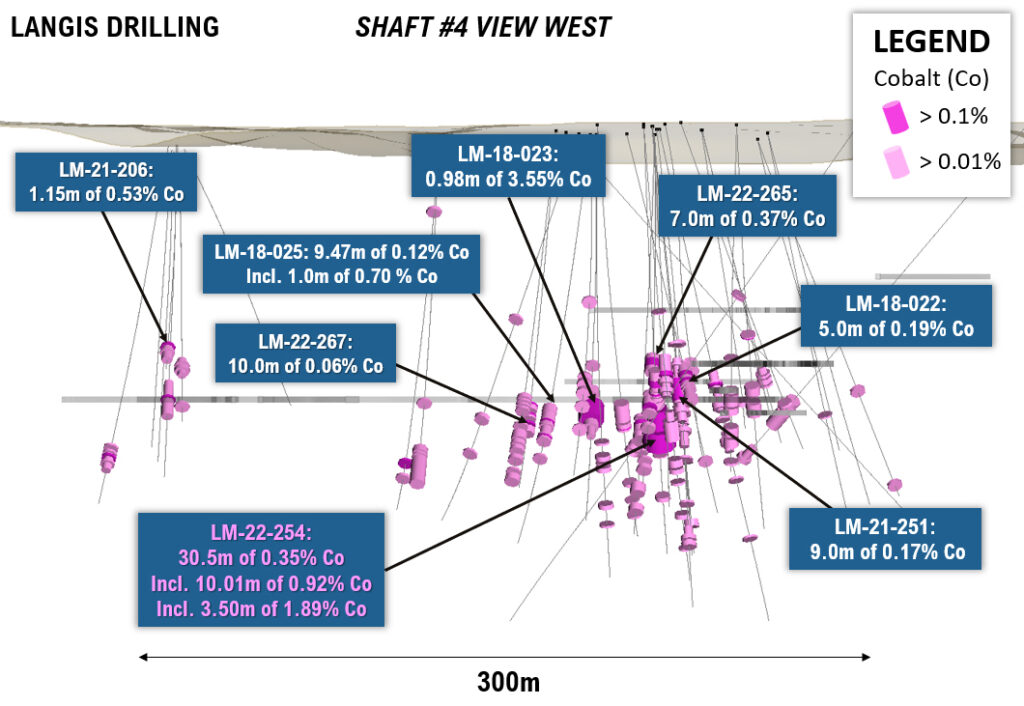
Regional Geology
The Cobalt region is part of the extensive Cobalt Embayment, defined by Paleoproterozic sedimentary rocks of the Huronian Supergroup (2.45-2.22 Ga), unconformably overlying volcanic rocks of the Abitibi Greenstone Belt (AGB; 2.75-2.695 Ga). Generally, these Paleoproterozoic sedimentary rocks are flat-lying and siliciclastic. The Archean basement rocks are typically steeply-dipping, greenschist, mafic volcanics with interbedded sediments. Syenites, monzonites and granites (2.685 – 2.67 Ga) of the AGB intrude the basement volcanic rocks. A younger Proterozoic suite of gabbroic dykes and sills, the Nipissing diabase, cut all the aforementioned rocks (2.2 Ga). Widespread diabase dikes occurred around 1.07 Ga, related to the Keweenawan rift system. The Cobalt Embayment is host to several north-northwest striking faults that extend for over 100’s of kilometers.
Langis Geology
The Langis Project is almost entirely covered by overburden, particularly in the eastern region. Property-scale mapping has been limited by only a handful of outcrops. Brixton Metals is working to integrate geophysics with the existing drill geology, structure and geochemistry, to improve the understanding of the area. The goal is to uncover new silver-cobalt structures with updated geological models.
Archean Keewatin volcanics (2.75-2.695 Ga): These greenschist rocks comprise both metavolcanics and metasediments. The volcanics are most commonly intermediate to mafic pillowed basalt and massive flows. Between flows, deep-water cherty sediments and pyroclastic rocks were deposited. The Keewatin rocks were tilted near-vertical during the Kenoran Orogeny.
Algoman intrusive (2.685 – 2.670 Ga): A large hornblende syenite pluton intruding the north end of the Langis property.
Proterozoic Huronian Supergroup (2.45-2.22 Ga): Huronian rocks comprise the majority of exposed outcrop on the Langis property and consist of gently-dipping, unaltered clastic, glacially-derived sediments unconformably overlying the older Keewatin volcanic and intrusive rocks. The Langis property is comprised of the Gowganda Formation, where we commonly see the lowermost Coleman Member, consisting of para- and ortho-conglomerates, pebbly sandstone and greywacke, and thinly-bedded argillites.
Nipissing Diabase (2.2 Ga): extensive gabbroic dykes and sills that intrude the Huronian sediments and the underlying Archean Keewatin volcano-sedimentary rocks.
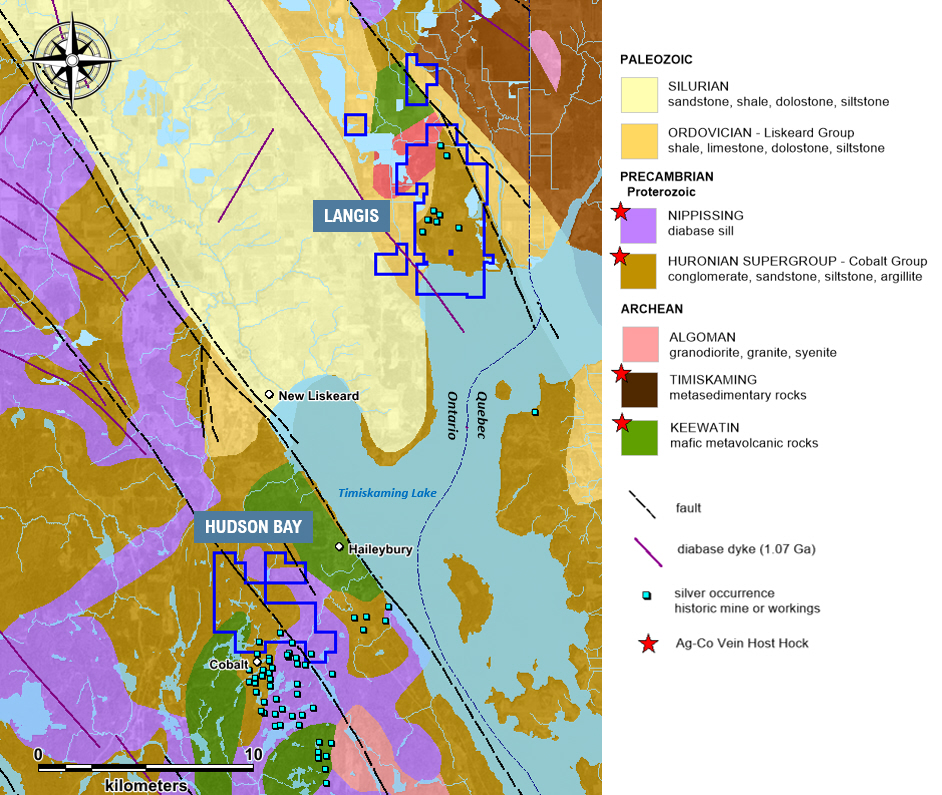
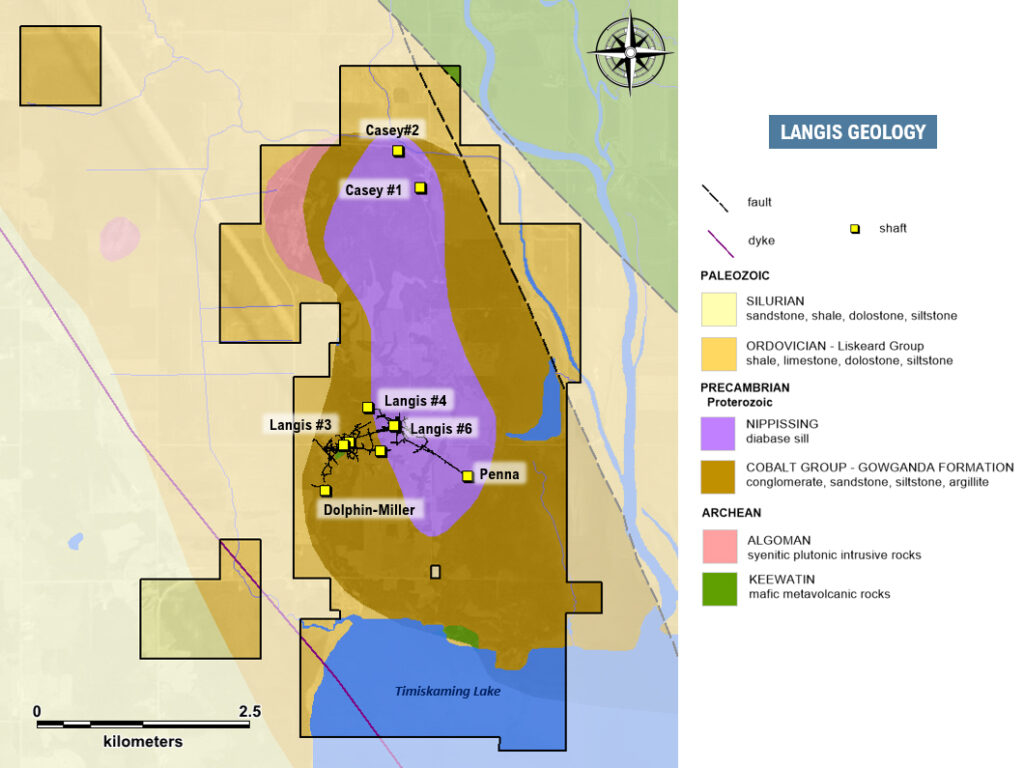
Mineralization
Mineralization at the Langis project presents itself as a high-grade, centimeter-scale, silver quartz-carbonate veins, with associated cobalt-nickel arsenides. Archean and Proterozoic rocks are host to the mineralization, with veins known to strike over hundreds of meters and extend up to 100 meters deep. Veins are generally steeply-dipping, sub-parallel to the Archean basement rock fabric.
Silver mineralization occurs as dendritic native silver, in addition to acanthite, argentite, proustite and stephanite. Associated Ni-Co aresenides include cobaltite, skutterudite (incl. smaltite), safflorite, nickeline and arsenopyrite. Locally, there is a base metal sulphide assemblage observed at Langis, consisting of pyrite, sphalerite, chalcopyrite, and rarely galena, pyrrhotite, and marcasite.
Renewed interest in the Cobalt Mine Camp has engaged scientists using new research tools, which has provided new insight into the depositional setting, mobilization, and classification of the mineralization in the region. Recent work describes a five-element vein deposit model, consisting of Ag-Ni-Co-Bi-As with associated Pb-Zn-Cu-Sb-U-Au depending on the host rocks, and hydrothermal fluids (Rush 2021).
Models:
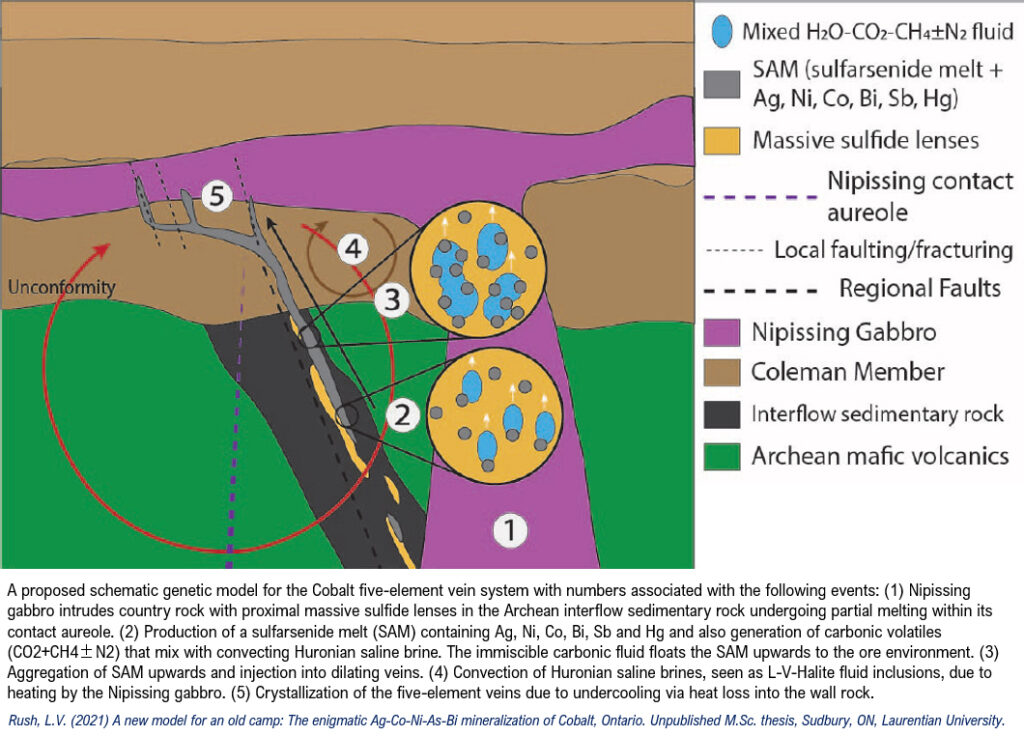
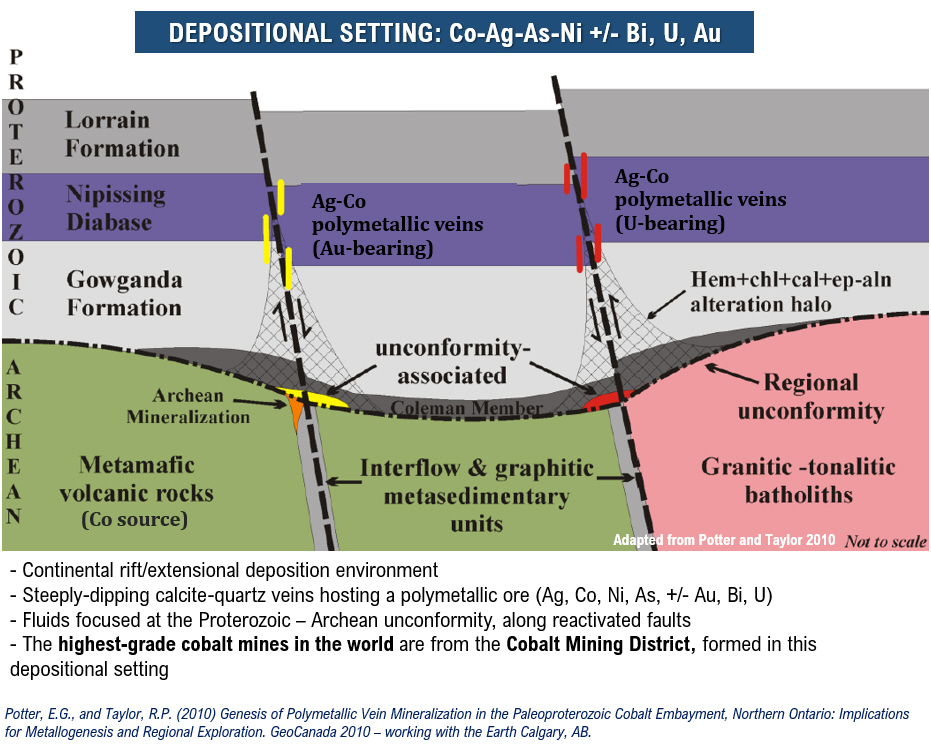
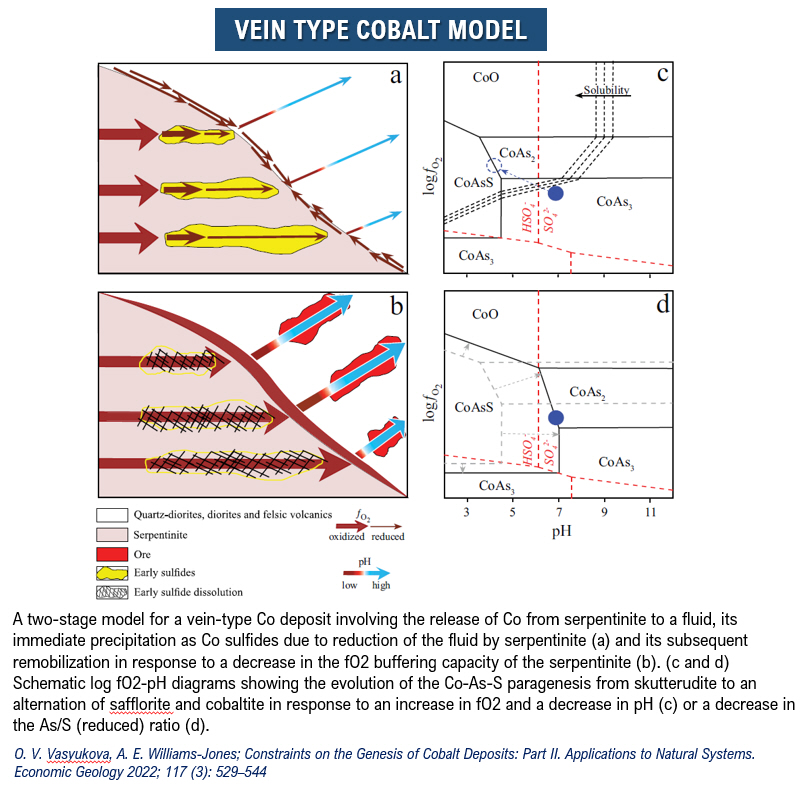
Why Silver & Cobalt?
There is an increased demand for silver and cobalt in the electric vehicle industry, with 55 million oz of silver used annually for electric vehicles, which is projected to increase to 90 million oz Ag by 2025. Each battery electric vehicle utilizes approximately 25-50 grams of silver, and over 4kg of cobalt is required for a new Tesla Model S car.
SILVER: Electrical and electronics are the biggest consumer of silver, using 371.5 million oz Ag in 2022. The photovoltaics (PV) industry is estimated to consume 161 million oz Ag in 2023. Jewelry is one of silver’s biggest demand sectors, using over 200 million oz Ag per year.
COBALT: Over 50% of cobalt is used for Li-ion batteries (electronics, storage and vehicles). Superalloys are used in space vehicles, aircraft engine parts, and nuclear reactors, and they utilize 17% of the cobalt produced each year. There is an increasing demand for cobalt that is mined outside of the Democratic Republic of the Congo (DRC). The DRC is currently producing ~60% of the world’s cobalt.
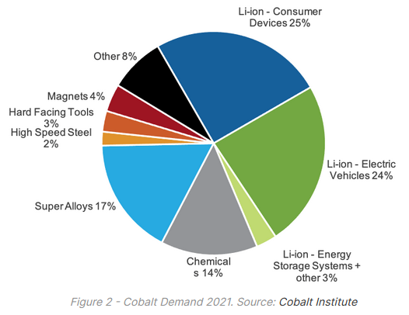
The Langis Project offers a brownfield exploration opportunity for high-grade silver, cobalt, and nickel. The project has demonstrated promising silver-cobalt recoveries, ranging from 88% to 98%, with assays showing values of up to 18% silver and 16% cobalt.
In 2016, Brixton signed an Exploration Agreement with the local First Nations. The Langis Project is situated within the traditional territory of the Timiskaming First Nation. Highway 65 runs through the property and many established secondary roads provide year-round access and excellent infrastructure. Power, railways, mills and a permitted refinery are located near the site.
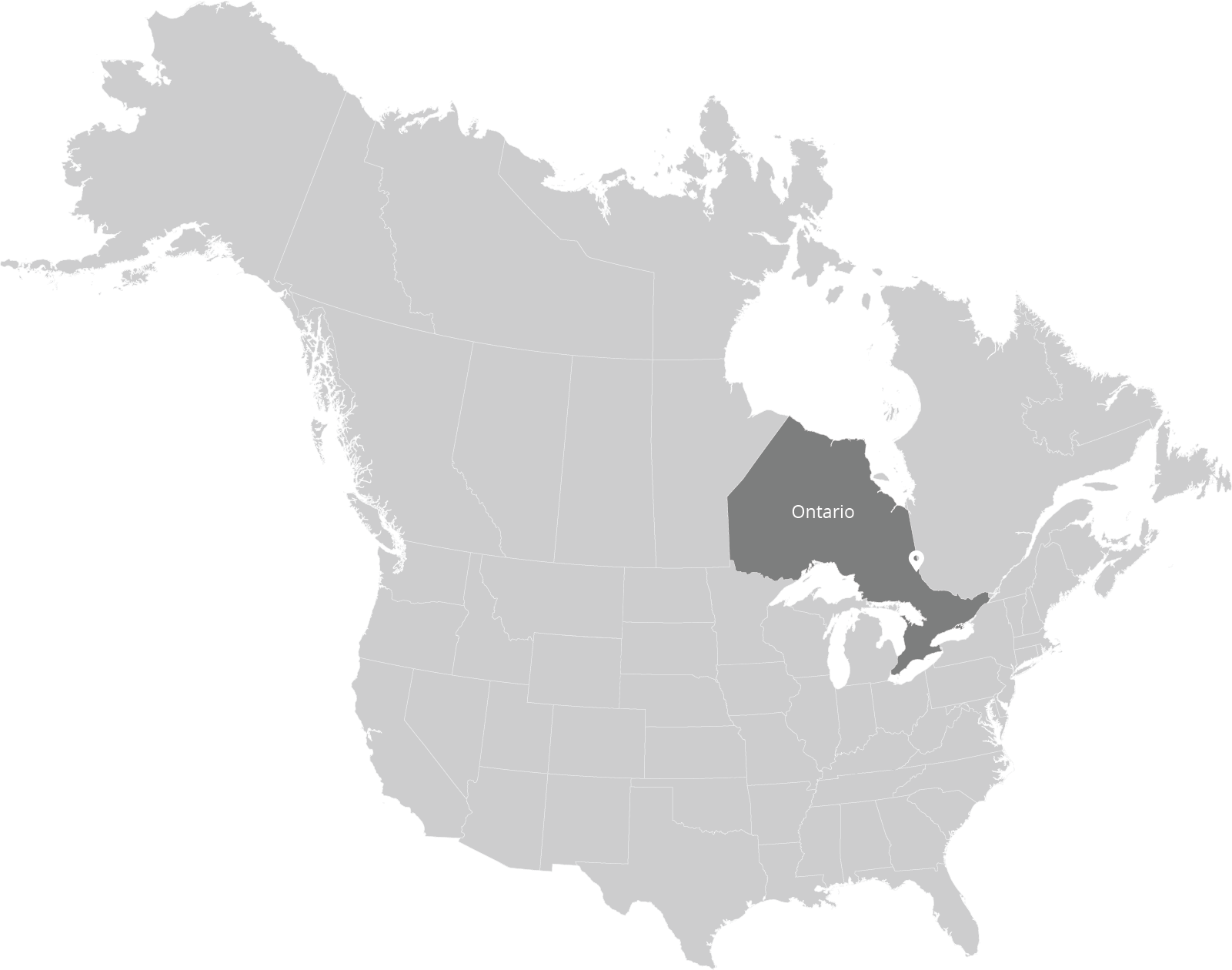
Langis-Hudson Bay